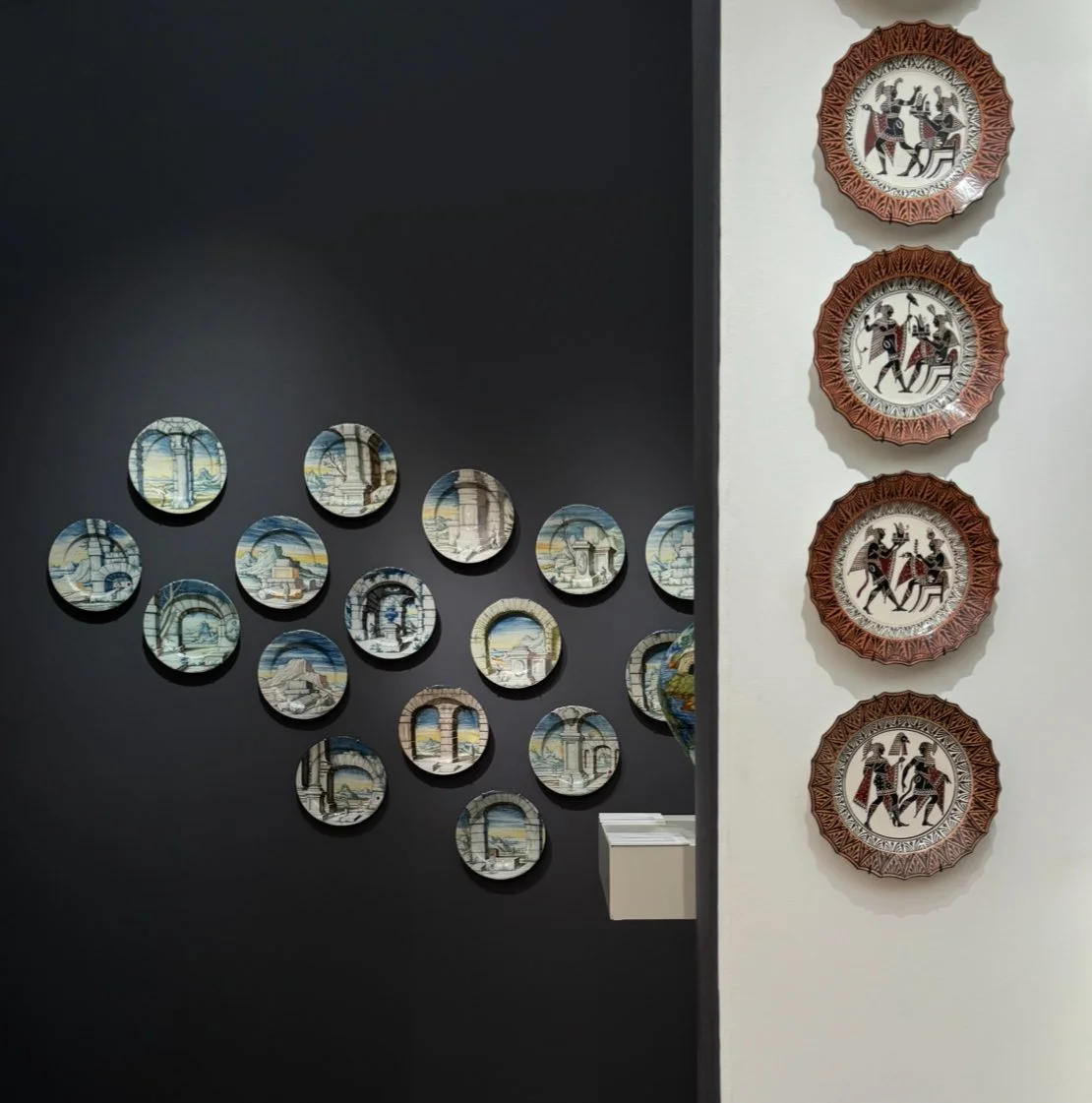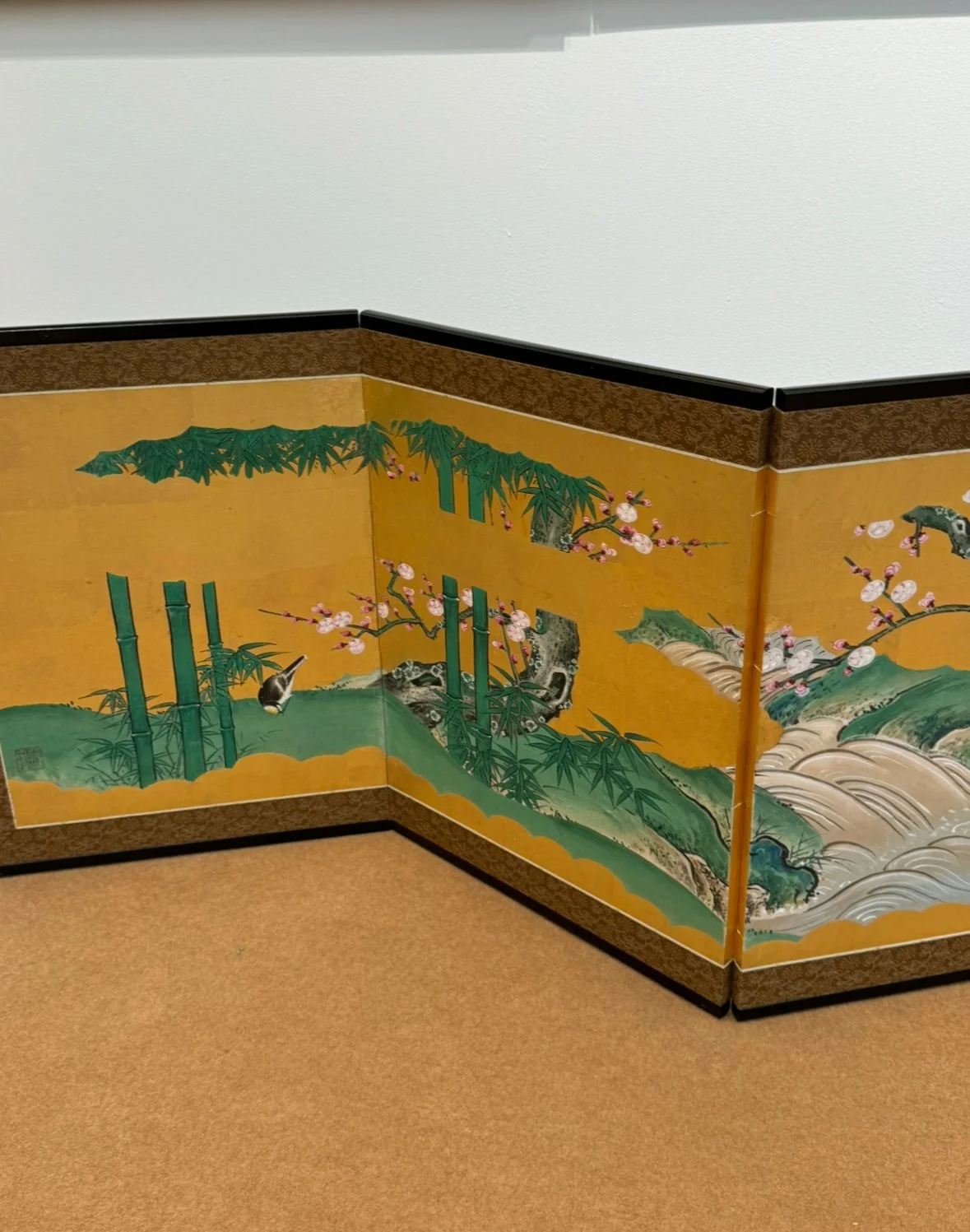Frieze Masters 2025: A Personal Note
There’s one event I plan months in advance: Frieze Masters.
With over a hundred international galleries all gathered beneath the colossal white tent at the edge of Regent’s Park amid yellowing leaves, Frieze Masters offers the rare chance to observe the art world’s pulse — commercial, yes, but never pressuring. One can easily glide through stalls, contemplating favourable pictures, and talk to gallerists when it feels right to do so – you are not required to purchase (apart from the ticket) to appreciate this carefully curated, grand display of antiquities, Old Masters, silverwares, tapestries, and so much more.
As someone more inclined to look and listen quietly, here are some brief thoughts I would share on this year’s fair. Personal biases are definitely included.
Sculptures feature rather heavily across the venue. Starting strong with David Aaron’s antique busts and torsos illuminated in the dark with an elegant theatricality, as if newly excavated. Galerie Chenel’s space is always a pleasure to walk through, where sculptural pieces are well integrated into desks and shelves – imagine typing an email whilst the bust of a young lady sits in a corner. Art Ancient exhibits a range of artefacts on white plinths, a display method seen in various other stalls that conjure up the feeling of wandering through a maze of classical Antiquity. This concept of constructing an assemblage of objects is especially the focus in ‘Reflections’, a new section at Frieze Masters showcasing decorative art and objects. Curated by Abby Bangser, the space is filled with Corinthian orders, large relief pieces, colourful marble inlay tabletops and bronze statuette, echoing the interiors of Sir John Soane’s Museum and Kettle’s Yard. The connection to the architect’s home is clearly visible, as every surface, from walls to tables to floors, is covered in artworks, some often layered upon others. The link to Kettle’s Yard, however, appears a bit ambiguous to me – the concept of living with art in a comfortable, homely environment seems hard to manifest in an art fair context with designated stalls and lighting.
The increasing displays of decorative objects are a delight to see. Raccanello & Leprince presents a dazzling display of Italian majolica plates juxtaposed with red and black antique ceramics. Koopman Rare Art, featured in Frieze Masters’ posts, creates a lovely interlude between still-life paintings and 20th-century conceptual art with glistening silverware that truly sparkles against dark blue walls. Gallery Moshe Tabibnia covers its space with a range of exquisite textile masterpieces, from Renaissance tapestry to smaller squares of patterned velvet, exciting a desire to collect them all. It is great to know that decorative arts are being popularised in major art events, since I find them, sometimes, to be more alluring and intimate than well-known paintings. I also encountered a series of Picasso’s ceramic plates in a corner, the joyous faces smiling at curious visitors. Handled by people in the past, these objects carry intricate networks of stories and global entanglements, a reflection perhaps of the current conditions of our diverse society. Whilst I understand that this may be a norm in the context of art fairs, I would love to see more detailed descriptions of such objects in labels or handbooks – their tales deserve to be valued and told.
Asian art. My topic of interest, something I tend to look out for, particularly at Frieze Masters, where the majority of galleries devote themselves to Euro-American art. Frankly speaking, there are more Asian artworks than I had expected. My top favourites include Thomsen Gallery, always with a beautiful selection of Japanese screens and lacquer objects – it is rare to be able to experience such a wide range of screens all at once, especially the smaller pieces depicting flowing landscapes and blossoming branches in comparison to monumental works that give a sensational visual experience with large areas of gold leaf. Shibunkaku shows a small but refined selection of silk scrolls, Rasti Fine Art with Chinese ink paintings and a variety of scholar objects in jade and precious gemstones. Tenzing Asian Art has a lovely mahogany table used by the staff, which I think fits perfectly in its slender rectangular gallery space, enacting the ritualistic atmosphere of a traditional hall. Southeast Asian art also features in several galleries, with a similar broad range of materials and motifs, though many centre around Buddhism or religious themes, making me wonder whether we are still placing these arts under a Western gaze that prefers mythicisation of Eastern cultures? The answer probably will contain some level of ‘yes’ – and I believe this is unavoidable in this context – not to be pessimistic, but this is something I think the Western art market is only slowly working on improving. Another point: there is a lack of real dialogue between distinct cultures. There is only one instance that I saw two portraits, one Western and one depicting a Chinese man, displayed together under the theme of cross-cultural connections. Perhaps the audience is tasked to do the comparisons mentally as they walk through each stall?
A quick note on colour scheme: everywhere I see beige, brown, and black. Where are all the colours and liveliness? Of course, this is Frieze Masters, not Frieze London, which I heard exhibits a lot of colours this year, yet it is still shocking to see such a neutral palette in comparison to the previous years. One factor is possibly the disappearance of lavish floral decorations in galleries, restaurants, and walkways – I remembered photographing large urns filled with white buds and green foliage last year, or how restaurant areas have short walls adorned with fruit and flower arrangements in splashes of red, orange, and pink. The repeated small glassware holding single stems that lined Nobu’s space today is just not it. On a similar note, I could observe some works that are exhibited repeatedly across the years – these familiar faces contribute to an overall conservative atmosphere this year, reflecting the wider changes in the gallery world. Amid turbulence, Old Masters and ancient statuary do offer reassuring comfort.
Still, there are some very, very innovative displays. Charles Ede, in a bold gesture, lined up high tables and small shelves attached to the walls with an array of antique glass bottles. Water is poured into many, and stems of nasturtiums and peonies climb over their crystal surfaces in a vibrant dance of life and motion. It is beautifully refreshing to see these ancient objects in action, used in our lives, bringing joy to every passerby.
Surprises and flaws coexist at this year’s Frieze Masters, yet I leave with a satisfying amount of inspiration and contemplation. If the fair this year feels more restrained, perhaps that restraint invites closer looking — and that, for those of us who love historic art, remains charming.
Frieze week? Always.

